Add your promotional text...
G7 Malaysia
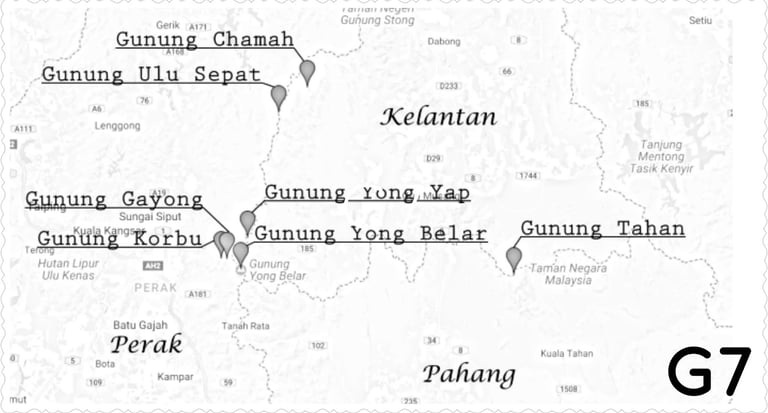

The Malaysia G7, simply known as the 7 highest mountains above 7000 feets. The ‘G’ is short for “gunung”, which means “mountain” in the Malay language – and the "G7" are the seven peaks distributed across the verdant northern half of Peninsular Malaysia. Each of the G7 peaks is still dwarfed by Malaysia’s highest summit, Mount Kinabalu, which towers above the jungles of Sabah at the height of 13,435 feet (4,095 metres). Conquering the G7 is seen as a mark of achievement among Malaysian mountaineers – so we organized and explored the G7 peaks for the benefit of those who consider mountain climbing a form of recreation. Below list is G1 to G7 follow by their respective height:
G1 Gunung Tahan – 2187m (7175 feet)
G2 Gunung Korbu – 2183m (7162 feet)
G3 Gunung Yong Belar – 2181m (7156 feet)
G4 Gunung Gayong – 2173m (7129 feet)
G5 Gunung Chamah – 2171m (7123 feet)
G6 Gunung Yong Yap – 2168m (7113 feet)
G7 Gunung Ulu Sepat – 2161m (7090 feet)
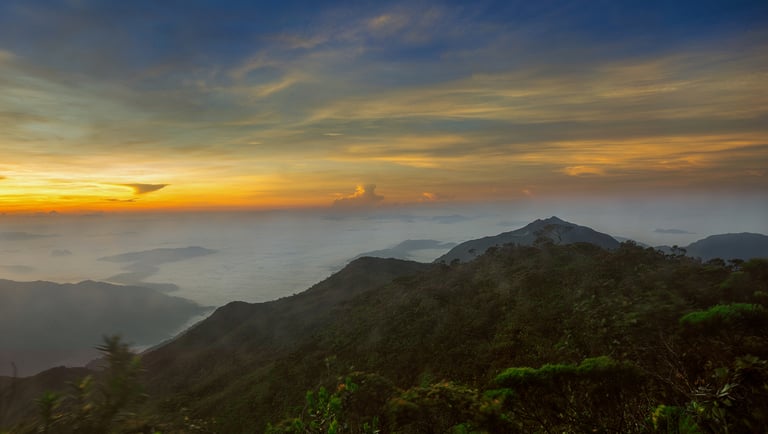

MOUNT TAHAN (2187m/7175ft)
Gunung Tahan is the highest point in Peninsular Malaysia. In the Malay language, “tahan” mean endure. The name of the mountain suggests that a certain level of physical endurance is required to conquer it. Gunung Tahan is considered by many to be one of the toughest treks in Peninsular Malaysia. It is located in Taman Negara National Park, Pahang.
MOUNT KORBU (2,183m/7,162ft)
The Titiwangsa Range is that chain of limestone peaks that run the length of the peninsula, and located about 25km from Ipoh is Gunung Korbu – the highest peak of the range and only a few metres lower than Gunung Tahan. As with the other G7 peaks, this mountain requires a high level of physical fitness.
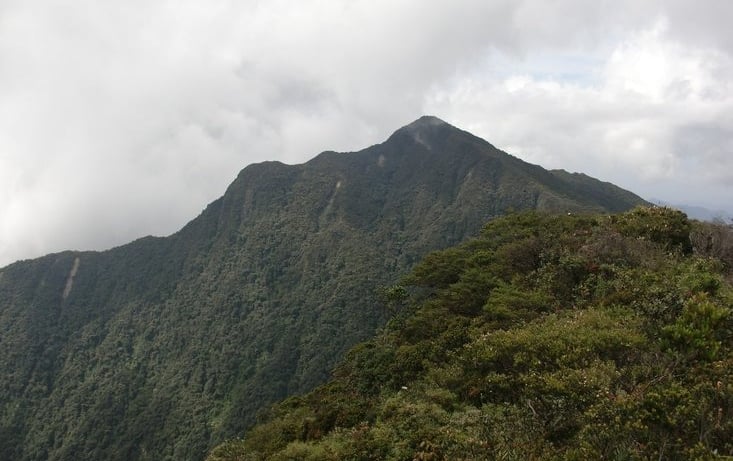

MOUNT YONG BELAR (2,181m/7,156ft)
Gunung Yong Belar is another of the Titiwangsa Range’s most prominent peaks, situated on the state border between Kelantan and Perak only 8km away from Gunung Korbu. A trek to the summit typically requires two days and one night’s stay on the mountain, but some attempt to scale the mountain within a single day – and hardcore mountaineers will climb a gauntlet of nearby peaks, including Gunung Yong Belar, Gunung Korbu, and Gunung Gayong, in a journey known as the “Trans Titiwangsa V1”.
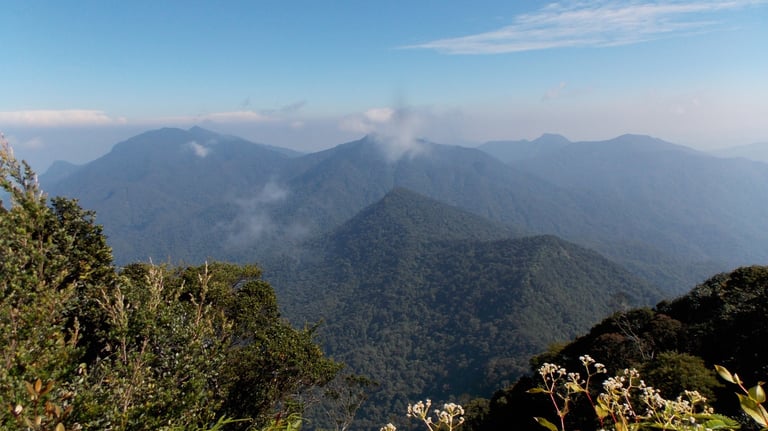

MOUNT GAYONG (2,173m/7,129ft)
Gunung Gayong is in the middle of the chain of peaks between Gunung Korbu and Gunung Yong Belar – which would mean that one would have to scale Gunung Korbu or Gunung Yong Belar to get to the summit of Gunung Gayong. Gunung Gayong can be reached in about an hour's trek from the top of Gunung Korbu.
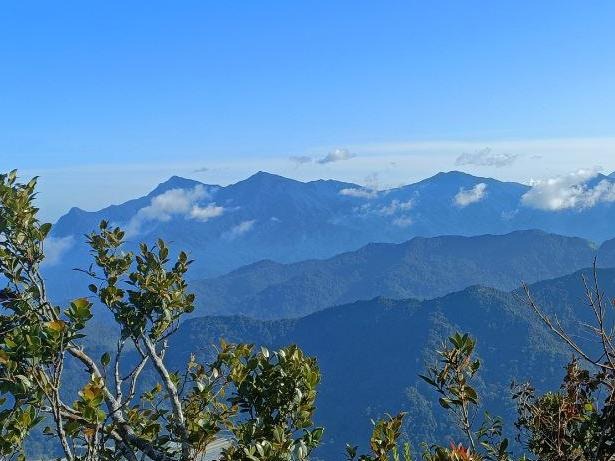

MOUNT CHAMAH (2,171m /7,123ft)
The title of one of the G7’s toughest peaks to conquer goes to Gunung Chamah – mainly on account of climbers having to navigate a dense jungle before getting to the trail leading to the summit. Having been off-limits during the days of communist insurgencies, the jungle has been left relatively untouched. The jungles around Gunung Chamah are now famed for sightings of wild tigers and elephants, with tiger footprints being quite a common sight along the trekking route.
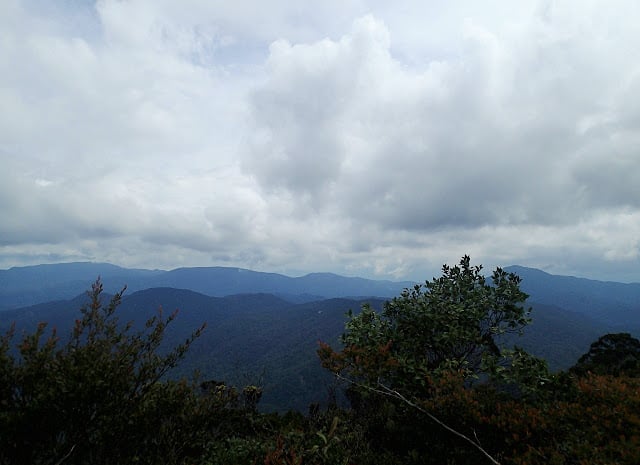

MOUNT YONG YAP (2,168m /7,113ft)
A serious contender for the single most challenging peak of the G7, the conical shape of Gunung Yong Yap presents a steep climb to the summit – and that says nothing of how the flora and fauna will fight any attempt at the peak. The mountain is populated by sandflies, leeches, and the occasional tiger.
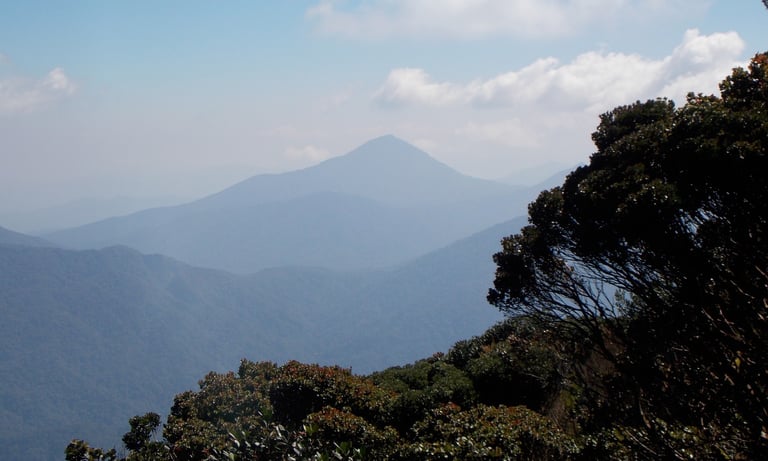

MOUNT ULU SEPAT (2,161m /7,090ft)
Ulu Sepat, standing at 2161m, is 7th highest mountain in Peninsula Malaysia. This mountain is in the remote around of Hutan Belum. This trek takes around 3 Days and 2 Nights to complete for most hikers. During the trek, hikers will encounter a wide river that needs to be crossed.
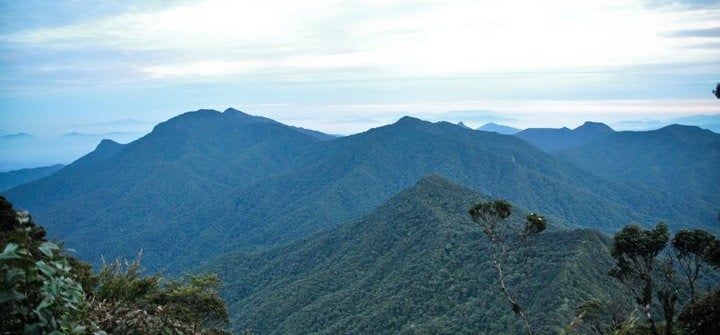


Global Expedition Training Sdn Bhd [202101006083 (1406382-D)]
Kelab Expedisi Global (Global Expedition Club)
Persatuan Pembangunan Konservasi Hutan Global
Corporate Office / Expedition Centre
Malaysia
Address: A10/2/2, One Ampang Business Avenue, Jalan Ampang Utama 2/2,
Ampang, 68000 Selangor, Malaysia.
Landline: +60342527552
Mobile no: 0192379653
Blogs....
1. Benefits of Hiking
2.
Overseas Office
Nepal Office :
House ,
Jalan Thamel, Kathmandu, Nepal.
Tanzania Office :
Arusha, Tanzania.